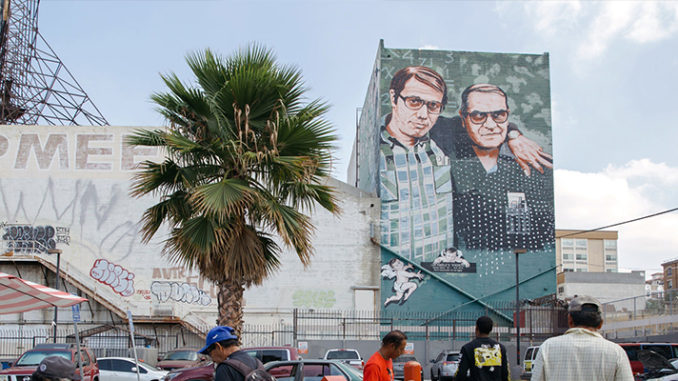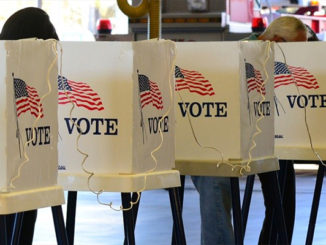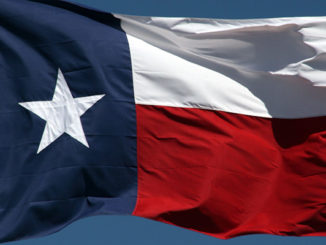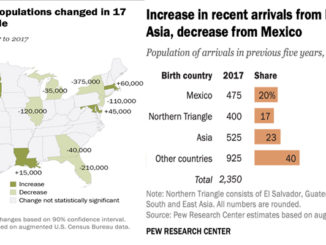
by and Thomas Fullerm, NY Times
California Democrats have been energized by a wave of anti-Trump sentiment to enact a sweeping agenda that in almost every way offers a counternarrative to Trump administration policies.
When President Trump flies into San Francisco next week for his first visit to the Bay Area as president he will set down in a state that has never fully welcomed him.
Harmeet K. Dhillon, a member of the Republican National Committee and a host of a fund-raising luncheon on Tuesday where seats for a couple at the president’s table go for $100,000, likened his visit to a trip “behind enemy lines.”
Behind those lines, Mr. Trump’s detractors have been remarkably active, as Democrats have been energized by anger against the president to enact a sweeping liberal agenda that in almost every way offers a counternarrative to the deregulation, anti-immigrant stance and conservative policies of the Trump administration.
Just in recent days, California has approved statewide rent control and moved to reshape the gig economy by forcing companies like Uber and Lyft to classify their drivers as employees, setting new labor standards that could give momentum to similar efforts in other states.
Almost three years into his presidency, Mr. Trump has catalyzed California into moving more aggressively to the left, providing an alternative vision, although with mixed results, to almost everything the Trump presidency has stood for.
“Donald Trump has been the impetus for putting everything on warp speed,” said Garry South, a Democratic political strategist in California. “It has pushed Democrats in California to take actions that might otherwise have been viewed as a little less urgent if we had a Democrat in the White House.”
On perhaps the two biggest issues animating political life in America today — immigration and climate — the two sides are pushing in opposite directions. While Mr. Trump champions his border wall and imposes new restrictions on asylum seekers, California is expanding medical care for undocumented immigrants and recently passed a new law outlawing private prisons, including detention facilities run by federal immigration authorities. And when California negotiated its own deal with four major automakers to set emissions standards and combat climate change, the Justice Department opened an antitrust inquiry.
During the first two years of the Trump presidency, Democrats in California coalesced around their role as leaders of the resistance, an idea that quickly became a bumper sticker and social media rallying cry. But more recently, lawmakers have channeled that energy into legislation, making California a showcase of what progressive governance looks like in the era of Trump.
At the same time, Xavier Becerra, California’s attorney general, has filed 59 lawsuits against the Trump administration, on issues ranging from immigration to health care to environment policy.
With a Democratic supermajority in both legislative houses in Sacramento, and a new governor, Gavin Newsom, determined to push a liberal agenda buoyed by a nearly $21 billion budget surplus, California, more than ever, feels like a place unto its own.
But in at least one way, California and Mr. Trump are bound together: with both of their futures resting on the economy. A recession would wipe out the budget surplus that has propelled new spending on social services in California, and threaten Mr. Trump’s re-election bid in 2020.
For his part, Mr. Trump has seen California as a perfect foil, a liberal haven rife with problems — homelessness, income inequality, gun violence — he can use to taunt his opponents and energize his base. The problems Mr. Trump cites are real: For all of California’s liberal politics and its rhetoric of tolerance and diversity, the state has the highest poverty rate in the nation when factoring in cost of living, and there are more homeless people in California than anywhere else in the country.
When Mr. Trump was in Japan over the summer for the G20 summit, he drew a contrast between the cleanliness of Japanese cities and the filth and the number of homeless people on the streets of San Francisco and Los Angeles, saying it was a problem that started two years ago even though it has been an issue that has confounded generations of California leaders.
This week, a delegation of White House aides visited Los Angeles to see the homeless problem up close, and an article in The Washington Post suggested the administration might try to clear the streets of the homeless and move them to federal facilities.
At a swanky event in Downtown Los Angeles, Mayor Eric M. Garcetti said he was dumbfounded when he saw the story. He said he began texting other mayors across the state, as well as Mr. Newsom. “Sweep people up?” Mr. Garcetti told an audience on Tuesday at the California Club. “What does that even mean?”
Mr. Garcetti was there to discuss the 2020 census, another front in the battle between California and the Trump administration. Much of the discussion centered on how California could push back against efforts officials see here as designed to lower participation in the count, like a failed bid by the Trump administration to add a citizenship question. The efforts could lead to an undercount of the number of immigrants, and thus affect California’s representation in Congress and its share of federal funds. California has appropriated nearly $200 million to bolster outreach efforts in the state, and ensure that undocumented immigrants participate in the census.
“There’s nothing Trump would like to see more than a diminished voice in California,” said Alex Padilla, California’s secretary of state, at the event.
As California has become more liberal, the state Republican Party has been deeply diminished. Hillary Clinton beat Mr. Trump in California by more than four million votes, and there are now more Californians who identify as independents than Republicans. Last year, the Democratic Party flipped seven congressional seats, including several in historically conservative Orange County, helping the party retake a majority in the House of Representatives.
But Mr. Trump does have powerful allies in the state, and pockets of California, including in the Central Valley, are deeply conservative and supportive of the president. Kevin McCarthy, a Republican from the Central Valley and the House minority leader, has been a consistent defender of the president in the face of his critics, including most recently when Mr. McCarthy said he saw no concerns with government and military officials staying at Trump hotels.
While Mr. Trump, who sold his Beverly Hills mansion earlier this year, won’t find much electoral support in California, he still raises money here. According to an analysis by Cal Matters, an independent news outlet, the president has raised more than $3 million in California this year, more than most Democratic presidential candidates.
At the Republican Party’s recent state convention near Palm Springs, Brad Parscale, Mr. Trump’s campaign manager, said, “the Trumps will be a dynasty that will last for decades.” But the cloud of Mr. Trump’s unpopularity in California hung over the convention, and a successful resolution pushed by Chad Mayes, a Republican lawmaker and critic of the president, that called on the party to condemn racism and xenophobia was seen as a rebuke of the president.
Mr. Trump himself has a checkered history with California. Hollywood never warmed to him as an entertainer, and in the 1990s he failed to build what he promised would be the world’s tallest building in Los Angeles. After he became president, a flash mob of protesters descended on his golf resort in Palos Verdes, spelling the word “resist.” And during several campaign stops in April and June 2016, before the Republican primary, he drew thousands of supporters to rallies — and also hundreds of protesters.
In April of that year, protesters temporarily blocked Mr. Trump from entering the Hyatt Regency Hotel in Burlingame, Calif., where he was scheduled to speak at the state Republican convention. He was forced to exit his motorcade and make his way off Highway 101 by foot. “That was not the easiest entrance I’ve ever made,” he told the audience. “I felt like I was crossing the border.”
But when he came to visit after the wildfires last year, he was welcomed to Paradise, Calif., by former Gov. Jerry Brown, Mr. Newsom and local officials.
Last year, Manuel Pastor, a sociologist and professor at the University of Southern California, wrote a book about the conflict between Mr. Trump and California, called “State of Resistance.”
Asked how he would update his book now, he said, “the conflict between the federal government, the Trump administration, has deepened. And California has gotten increasingly better at being able to defend itself and resist. And the Trump administration has gotten increasingly creative about ways that it could shortchange California.”
In his work, Mr. Pastor has drawn parallels between the political polarization of America today and 1990s California, when demographics were changing to become more Latino and when the state enacted harsh measures against immigrants.
Although California is today perceived as an inveterate, deep-blue state, the overwhelming control that Democrats currently have over both the legislative and executive branches is a historical anomaly. Since 1900, there have been nearly three times as many Republican governors in California as Democrats. And when Mr. Newsom succeeded Jerry Brown as governor in January it was the first time a Democrat had followed a fellow Democrat since 1887.
Now, however, momentum is clearly with the Democrats, as anger over Mr. Trump’s presidency has unleashed a legislative fervor.
Chris Lehane, a former political adviser to President Bill Clinton, said progressives in California were in the midst of a “renaissance in a belief in government.” He described Mr. Trump’s election as being the action that helped spur a liberal reaction — he called it “political physics.” Mr. Lehane said he was struck not only by the number of progressive laws coming out of Sacramento this session but by their breadth and ambition. “I think the tempo is really at a different level,” he said. “Now you see California playing offense.”
But he cautioned that the Democrats’ success, and their renewed faith in government, was predicated on government being able to solve the state’s many social ills — its lagging educational system and housing crisis, among them. “We live in a world where technology is moving so fast it’s really so difficult for society to adapt,” he said. “Is government able to move fast enough to be able to address these issues? And ultimately if government can’t, then who does?”
Tim Arango and Jose A. Del Real reported from Los Angeles, and Thomas Fuller from San Francisco.
Tim Arango is a Los Angeles correspondent. @tarangoNYT
Thomas Fuller is the San Francisco bureau chief. @thomasfullerNYT
.



